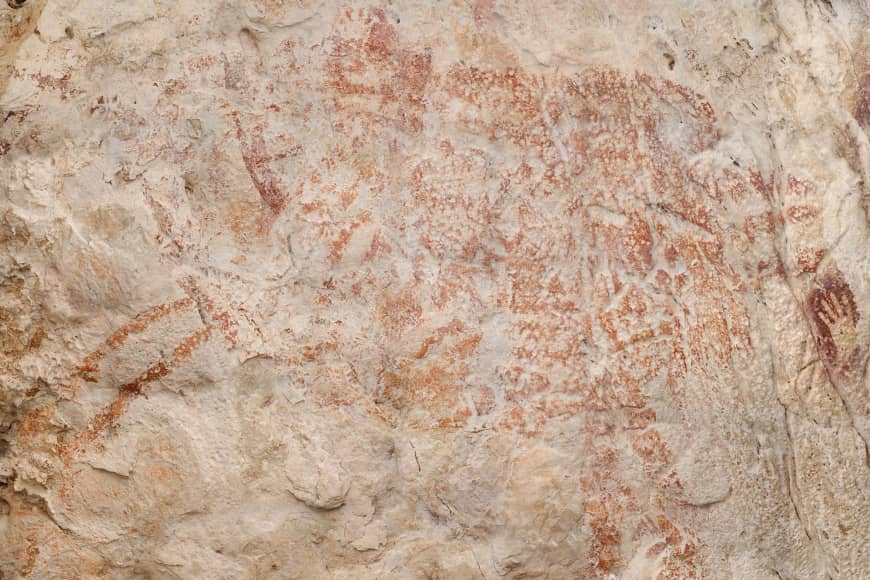
Everyone loves to share animal pictures. And that includes Neanderthals.
According to the Associated Press, scientists found the world’s oldest known animal drawing deep inside a cave in Borneo, Indonesia. The drawing, experts believe, is at least 40,000 years old, edging out cave drawings in France and Spain that historians previously assumed were the oldest.
“The oldest cave art image we dated is a large painting of an unidentified animal, probably a species of wild cattle still found in the jungles of Borneo,” Maxime Aubert, an archaeologist and geochemist at Griffith University in Australia and lead author of the study, said in a statement. “It is now the earliest known figurative artwork.”
The red drawing, which spreads about five feet wide, depicts the silhouette of an animal which could be a bull or something like it. In addition to the bull, the team also found red- and purple-colored hand stencils and even a few paintings depicting human scenes.
A report on the drawing was released in the journal Nature on Wednesday. It upended the belief that figure painting emerged in Europe first. Now, because of this finding, scientists know the practice of animal drawing began simultaneously on both continents. The new findings are also leading experts to question the timeline for the birth of human creativity. Scientists are now asking, did this creativity come from something evolutionary, or was it affected by something historical?
To reach the remote limestone caves in Borneo, Aubert and his team had to use machetes to cut through the thick jungle. They walked through the caves wearing miners’ helmets and searched for any paintings that they could identify by age. Most of the paintings the team found could not be aged because the scientists relied on specific mineral deposits for testing.
As for why cave-painters of 40,000 years ago chose to recreate the image of a bull, nobody is quite sure. “We think it wasn’t just food for them — it meant something special,” Aubert said.













